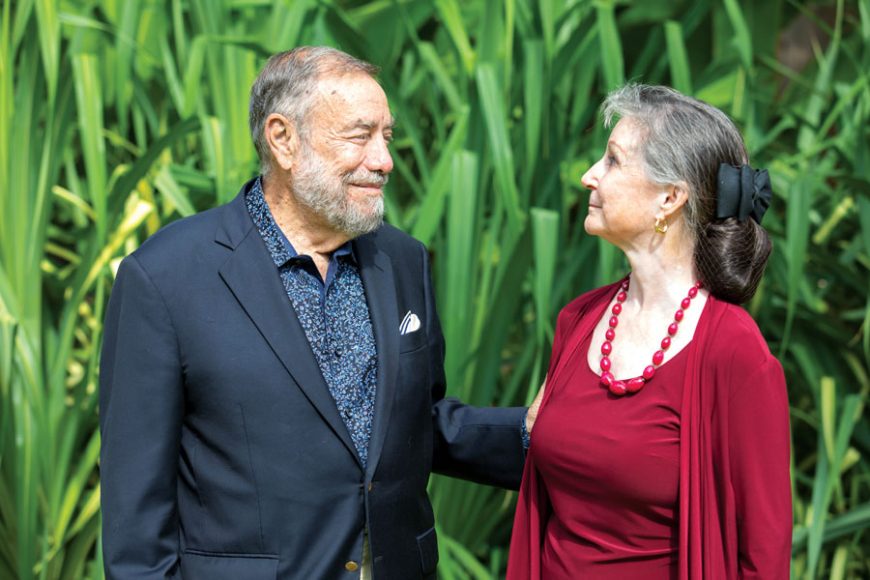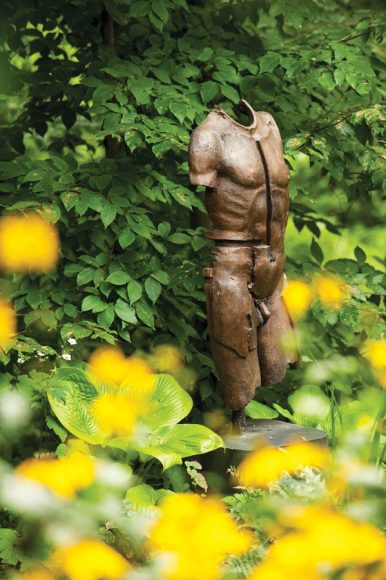Those of you who are faithful readers of WAG magazine know that there are few more creative couples than Judith and Andrew Economos.
We first introduced you to the pair in the February 2013 WAG when we visited them in their fabulous Yonkers home, teeming with Judith’s paintings and sculptures and Andrew’s woodwork. Its rich carvings and sculpture garden were a tribute to their teamwork.
After some 40 years in the home, the two have returned to the place Andrew knew first — his hometown of Sarasota, Florida. There they’ve continued with their artistic endeavors, designing a new sculpture garden, renewing old acquaintances and encountering one familiar but always uninvited guest — the red algae that plague the Gulf Coast.
“It kills the fish,” Andrew says, “and produces noxious gases that cause people’s eyes and throats to burn. I first saw it in 1950 when it wiped out the natural sponge population before Dow (Chemical Co.) invented the synthetic sponge.
“This year has been particularly bad, with red algae killing millions of fish and hurting tourism.”
Eradicating the algae is a daunting challenge, one that calls for Andrew’s entrepreneurial spirit. As we wrote of him in 2013, he “got in on the ground floor of computers and data analysis, heading up that effort for NBC before starting his own company, RCS (Radio Computing Services), which he sold to Clear Channel, which in turn was bought by Bain Capital.”
So we were hardly surprised to hear that he has recently created The Red Tide Institute, “to eliminate or mitigate” the destructive algae. The institute is working with Mote Marine Laboratory & Aquarium, also of Sarasota, whose president and CEO is Michael P. Crosby, a marine biologist with a long career in academia and the federal government. Andrew says Crosby has a marine biologist in mind to head the institute but any announcement at the present would be premature.
The institute and the lab are tasked with coming up with solutions to this longtime red menace, which has been given a boost, Andrew says, by the increasingly warm Gulf waters caused by climate change.
Japan has countered a different type of algae using clay. Back in Westchester, Andrew used charcoal dust and barley to destroy the green algae he found in his pond. But he adds that it’s one thing to apply such remedies to a small area, quite another to think they’ll work when they’re spread by a plane 50 miles from the shore, the way California combats forest fires with water and flame-retardant chemicals.
“That’s my paradigm,” he says of the Californian approach. In following it, he and his team will be asking one question: “What is the most effective way to do this so we don’t kill the fish?”
For more, visit mote.org.




